In the age of streaming saturation, only Spotify stands out through its flawless library of millions. But how do you deal with the songs you have collected for years locally? How do you add downloaded music to Spotify? No worries! If you are a serious Hi-Fi chaser or just a casual user and want to upload your collection offline to the cloud, this guide will take you every step of the way: from finding your files and calibrating the settings of Spotify to streamlining playlists.
You will be shown how, through desktop software to mobiles, you can sync up and connect local tracks on all of your devices, take your favourite tracks while moving out, and be inspired to do something different. Get set to give your listening experience a makeover. It’s time to get started!

Yes, you can add downloaded music to Spotify by importing local tracks through the desktop client. Free members and Premium members have access to the feature, although offline synchronisation to mobile devices can only be obtained through Premium. When your local songs are updated to Spotify, you can create playlists that contain your downloaded and online songs. Premium users can sync these playlists to mobile devices for offline access. Free subscribers, however, are limited to desktop playback.
For all the Premium members of Android & iPhone, the most appreciable benefit would be the permission to import personal MP3 from iTunes, etc. Thus, the offline tracks would be perfectly merged along the side of the streamable songs on Spotify. No matter if you are jogging through a no-signal park or commuting through the crowded underground subway system, you can use this method to kill time easily.
Step 1. Tap the profile photo in the upper corner.
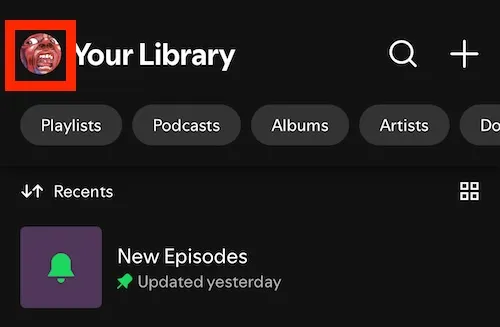
Step 2. Follow this path: Settings and privacy > Local Files > Show audio files from this device. Then, turn the Show audio files from this device on.
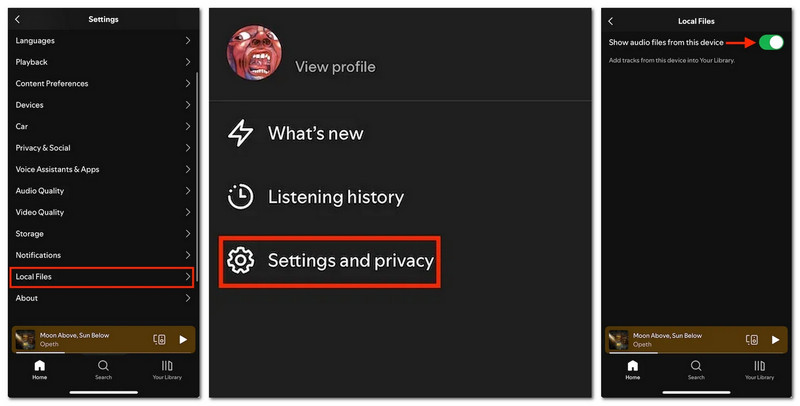
Step 3. Choose Your Library at the bottom and select Local Files.
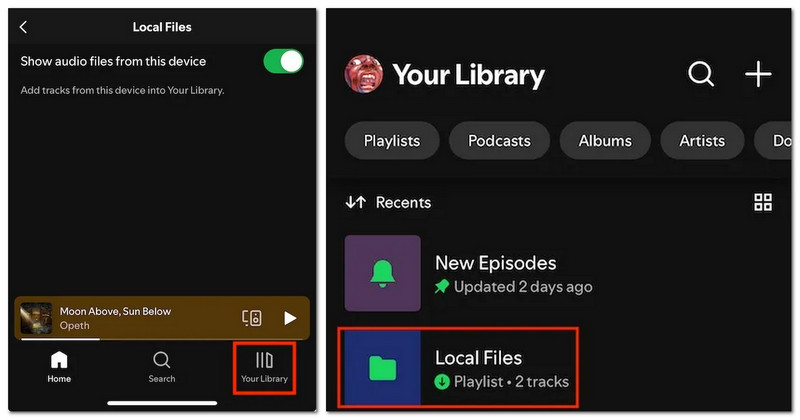
Step 4. The Spotify Local Files function has been activated. What you need to do now is import your files. For iPhone, locate and open Files. Then, find where your local file is stored and copy it to the Spotify folder.
For Android, the steps are basically the same, but the file manager’s name might vary depending on the brand.
Note
Do not delete or move any folder or files inside the Spotify folder, which might lead to app crashes.
Now, let’s see the steps on PCs, which are pretty different from the mobile platform. Please be aware that this method is only doable on the desktop app. Pretend you are on the mobile platform, please view the above part.
Step 1. Click the profile photo in the upper corner on right corner.

Step 2. Find and turn the Your Library option on.

Step 3. Click Add Source and select the folder where you store your local songs.
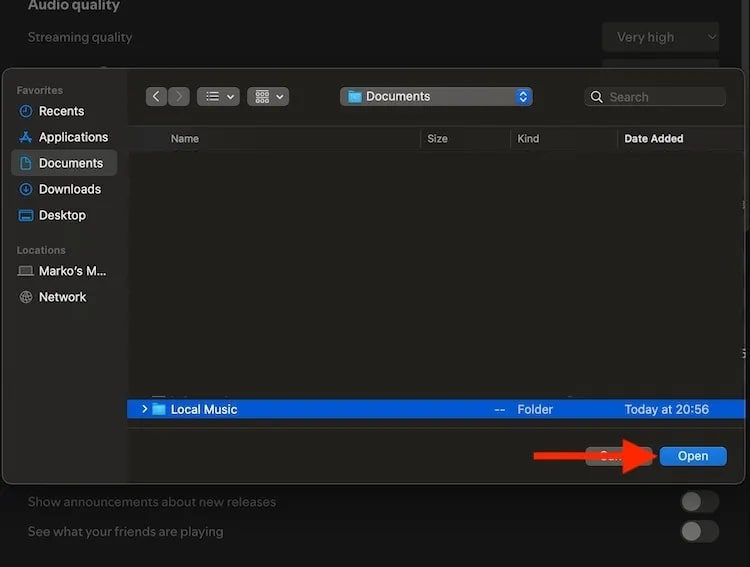
After that, you should be able to see your local songs’ folder appear in the playlist.

Now that you’ve got the file merger and synchronised playlists sorted, you may still want to take advantage of the offline library of Spotify without paying for Premium. While the standard edition keeps downloaded tracks behind a subscription, you can take a look at the bypass apps like StreamByte for music. It’s basically a virtual audio recorder that captures high-def playback from Spotify and re-routes it as standard MP3s or even lossless FLAC files stored directly on the device.
100% Secure. No virus.
100% Secure. No virus.
Features
• Convert and save your songs with 320 kbps.
• Support various mainstream platforms such as Spotify, Apple Music, Amazon Music, etc.
• Convert your music to WAV, MP3, M4A, etc.
Note
You can also view this post about the review of StreamByte for Music to fully understand it.
Step 1. Choose a music platform and log in.
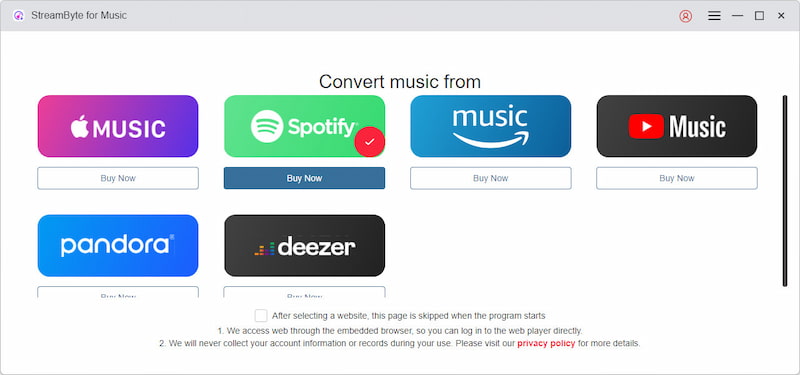
Step 2. Select the music you want to save and click Add to the conversion list.
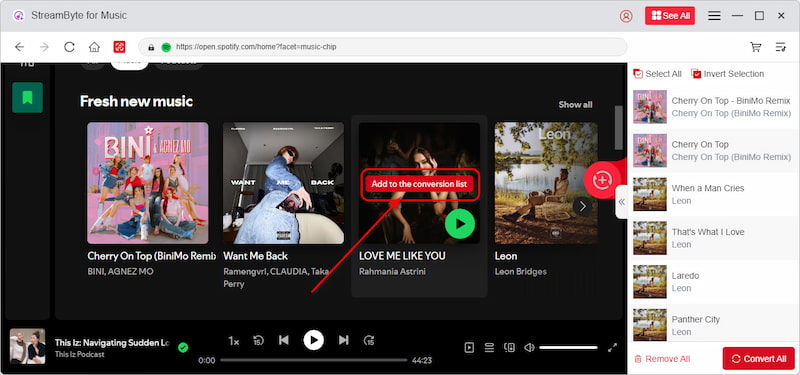
Step 3. Adjust the quality, format and output place of your music. Then, hit Convert All.
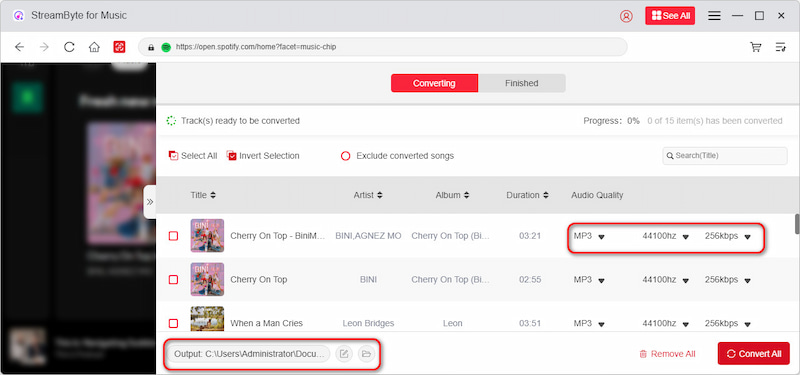
OK. After the introduction of these steps and one of the best Spotify downloaders, I deem that you have learnt the way to upload your local music to Spotify. However, someone might ask, Can I sync Spotify local files to my iPhone? Good question! As far as we know, there’s a way to do it via iCloud. Just follow the steps below.
Step 1. Open the iCloud on your MacBook and drag your music files to the folder marked with a cloud.
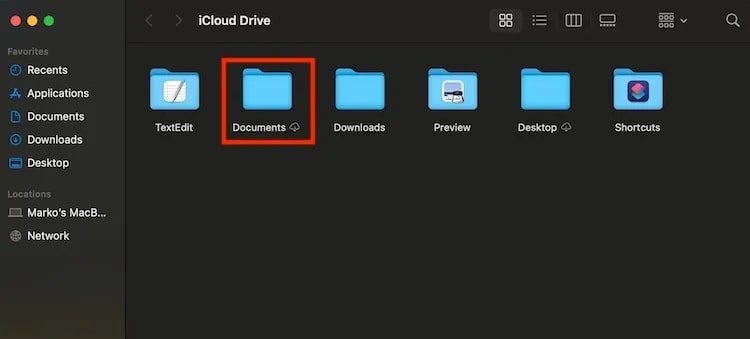
Step 2. Now, pick up your iPhone and go to your iCloud.
Step 3. Long-press the music file and tap Move > On My iPhone. Then, the music will be synced to your iPhone.
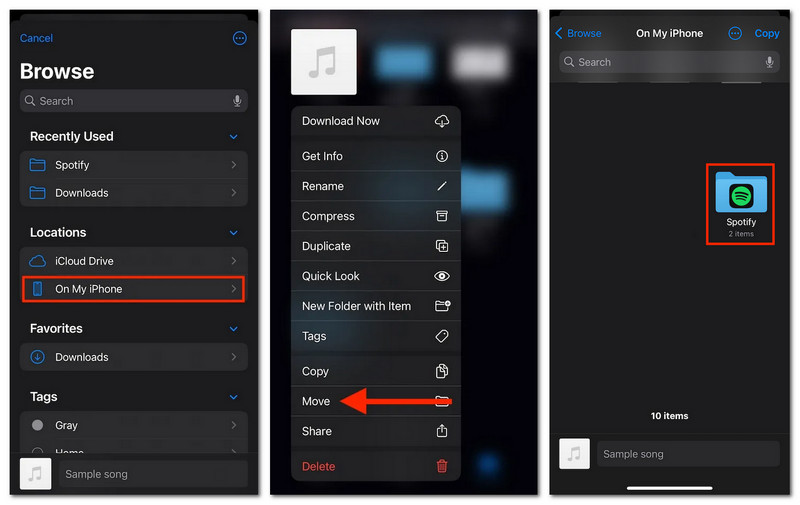
This time, we have walked you through the way to add downloaded music to Spotify on Android & iPhone & PC. After learning this tutorial, you should be able to upload any of your local songs to Spotify. In addition, there’s also a superb music converter, StreamByte for Music, that helps you download and convert music from multiple platforms, such as YouTube, Amazon Music Apple Music, without a premium. Also, if you have more questions, please read the posts below to see if they answer your questions. Or, you can contact us directly.
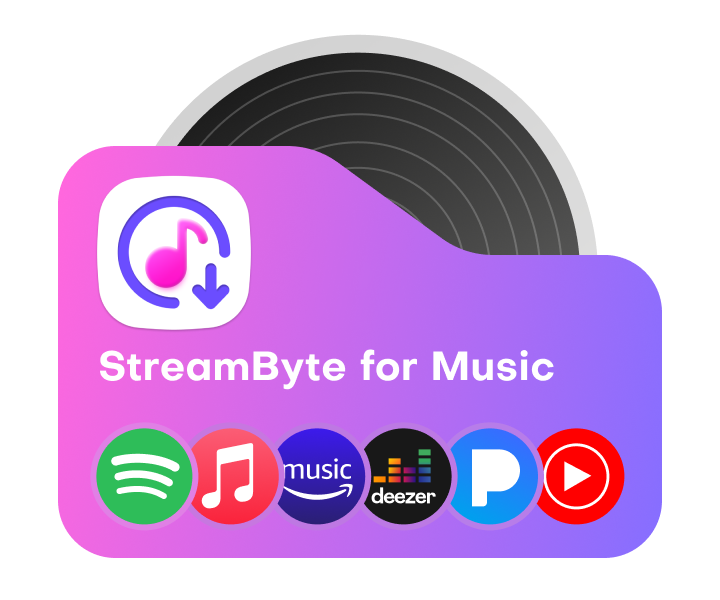
All Music Converter
Best music converter to download music from multiple streaming media without losing quality.

Subscribe to get StreamByte upgrades, guides, discounts and more in the first moment.
Invalid Email Address.